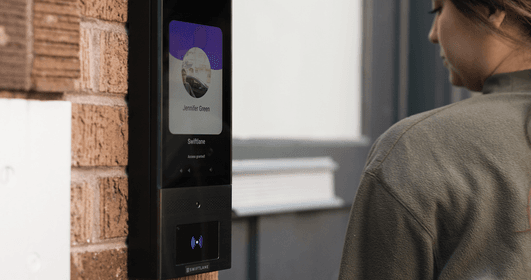Are you tired of relying on traditional locks and keys to keep your home or business secure? Fob door security systems are the perfect solution for those seeking a safer and more convenient option. With the right tools and guidelines, anyone can install a fob door system. In this article, we’ll cover everything you need to know about fob doors, including how to choose the right one, install it, and manage your system over time. Read on to learn more!
Table of Contents
- Understanding Fob Door Security Systems
- What is a Fob Door?
- Benefits of Fob Door Security Systems
- Key Components of a Fob Door Security System
- Choosing the Right Fob Door for Your Needs
- Preparing for Fob Door Installation
- Step-by-Step Fob Door Installation Guide
- Programming and Managing Your Fob Door System
- Enhancing Your Fob Door Security
- Troubleshooting Common Fob Door Issues
Suggested Posts:
- Key Fob Entry Systems – A Complete Guide
- Keyless Entry Systems for Apartments- Essential Tips for Buying
- Key Fob Entry System for Commercial Buildings – Buyer’s Guide 2023
- Keyless Door Entry Systems in Commercial Buildings – An In-Depth Guide
Understanding Fob Door Security Systems
Before we dive into installation, it’s important to understand the basics of fob door security systems. A fob door is a type of security door that requires a small electronic device (the fob) for entry. These devices are programmed to work with a specific fob reader, which is usually mounted on the wall next to the door handle. Once authorized, the reader sends a signal to the door’s locking mechanism to release, allowing entry.
But how does this technology work? Fob doors use RFID (Radio Frequency Identification) technology to communicate between the fob and the reader. This technology is similar to what is used in credit cards or passports with RFID chips. The fob emits a signal that is picked up by the reader, which then sends a signal to the door to unlock. The signals are encrypted, making it difficult for unauthorized individuals to replicate or intercept the signal.
What is a Fob Door?
A fob door is a type of access control system that uses RFID technology to unlock doors. The fob itself is a small electronic device that emits a signal to the fob reader, which then unlocks the door. This method of unlocking is more secure than traditional locks, as the signals between the fob and reader are encrypted and difficult to replicate.
Fob doors are becoming increasingly popular in both residential and commercial settings due to their enhanced security features. They are particularly useful for businesses or organizations that require strict security protocols, as they can be programmed to limit access to specific people or times. This means that only authorized individuals can enter the building or specific areas within the building, reducing the risk of theft or other security breaches.
Benefits of Fob Door Security Systems
One of the primary benefits of a fob door security system is enhanced security. Traditional locks can be picked or bypassed with illegal methods, but fob doors are difficult to override without permission. Additionally, fob doors can be programmed to limit access to specific people or times, making them ideal for businesses or organizations that require strict security protocols. Finally, fob doors provide added convenience, as fobs eliminate the need for traditional keys that can be lost or stolen.
Another benefit of fob door security systems is that they can be integrated with other security measures, such as CCTV cameras or intercom systems. This provides an additional layer of security, as the system can be set up to record who enters and exits the building or specific areas within the building. In the event of a security breach, this information can be used to identify the individual or individuals responsible.
Key Components of a Fob Door Security System
When installing a fob door system, it’s important to understand the key components involved. These typically include a door frame and lock, fob reader, control panel, and access control software. Depending on the model you choose, additional components like CCTV cameras or intercom systems may also be included.
The door frame and lock are the physical components that secure the door. The fob reader is mounted on the wall next to the door handle and communicates with the fob to unlock the door. The control panel is the brain of the system, communicating with the fob reader and access control software to manage access to the building or specific areas within the building. Access control software is the user interface that allows you to program the system to limit access to specific individuals or times.
Choosing the Right Fob Door for Your Needs
When it comes to securing your property, a fob door system can be an excellent investment. These systems offer a range of features that can help you control who has access to your building or property, and when. However, not all fob door systems are created equal. To ensure you choose the right one for your needs, it’s essential to evaluate your requirements carefully and research different brands and models.
Assessing Your Security Requirements
Before you start comparing different fob door models, take some time to assess your security requirements. Consider the level of security you need and the number of users who will require access. If you’re running a business, you may need to grant access to employees, contractors, and visitors. It’s also worth thinking about whether integration with other security systems, such as cameras or alarms, is necessary.
Another factor to consider is the encryption strength of the fob door system. Look for a system that uses strong encryption to protect against hacking attempts. The last thing you want is for your security system to be compromised, leaving your property vulnerable to theft or damage.
Comparing Different Fob Door Brands and Models
Once you’ve identified your security requirements, it’s time to start researching different fob door models. Look for brands with a strong reputation for security and reliability. Read reviews from other customers to get an idea of the pros and cons of each system.
It’s also worth considering factors like installation ease-of-use and maintenance requirements. Some fob door systems may be more challenging to install than others, and some may require more maintenance over time. These factors can impact the overall value of the system over time, so it’s worth considering them before making a purchase.
Selecting the Appropriate Access Control Features
Finally, consider the access control features offered by different fob door models. These features can help you customize the system to meet your specific needs. For example, time-based access control can limit access to certain areas of your property during specific times of day. Guest access codes can allow visitors to enter your property without giving them permanent access. Remote access control can allow you to manage the system from anywhere in the world.
When selecting the appropriate access control features, it’s important to think about your usage. Some features may be unnecessary for your needs, while others may be critical. Make sure the system you choose offers the features you need, and that they are customizable to fit your usage.
In conclusion, choosing the right fob door system requires careful consideration of your security requirements, research into different brands and models, and an understanding of the access control features available. By taking the time to evaluate your needs and compare different systems, you can find a fob door system that offers the security and convenience you need.
Preparing for Fob Door Installation
Installing a new fob door can be an exciting and convenient upgrade to your home or office security system. However, before you dive into the installation process, it’s important to take some time to prepare and plan to ensure a smooth and successful installation.
Here are some additional tips to consider when preparing for your fob door installation:
Gathering Necessary Tools and Materials
When gathering your tools and materials, it’s important to make sure you have everything you need before you begin the installation process. In addition to the basic tools mentioned in the original text, you may also need a level, a pencil, and a stud finder. It’s also a good idea to have some extra screws and anchors on hand, just in case.
When it comes to the fob door system itself, be sure to do your research and choose a system that fits your needs and budget. Some systems may come with additional features, such as keyless entry or remote access, that you may find useful.
Ensuring Proper Door Measurements
Measuring the door frame accurately is crucial to ensuring a proper fit for your fob door system. However, it’s important to keep in mind that not all door frames are created equal. Some frames may be slightly uneven or out of square, which can affect the installation process.
If you’re unsure about how to measure your door frame, consider consulting a professional or doing some additional research to ensure accuracy. Taking the time to measure correctly will save you time and frustration in the long run.
Planning the Installation Process
Planning the installation process ahead of time can help you avoid common pitfalls and ensure a successful installation. If you’re working alone, consider setting aside a full day to complete the installation. If you have a helper, you may be able to complete the installation in less time.
Before you begin, make sure you understand the manufacturer’s instructions and have a clear idea of the steps involved. Consider creating a checklist or timeline to help you stay on track and avoid missing any important steps.
By taking these additional steps to prepare for your fob door installation, you can ensure a smooth and stress-free process that results in a secure and convenient upgrade to your home or office security system.
Step-by-Step Fob Door Installation Guide
With the preparation out of the way, it’s time to start installing your new fob door system. Follow these step-by-step instructions to ensure proper installation:
Installing the Door Frame and Lock
First, install the door frame and locking mechanism according to the manufacturer’s instructions. Verify that everything is level and properly aligned before proceeding.
Mounting the Fob Reader and Control Panel
Next, mount the fob reader and control panel to the wall. Use the provided template to ensure precise placement and use screws to firmly attach both components to the wall. Make sure the components are level and properly aligned before proceeding.
Connecting the System to Power and Data
Once the reader and control panel are mounted, connect the system to power and data. Follow the manufacturer’s instructions for wiring and connecting this portion of the installation. Be sure not to skip any steps as failing to do so could result in errors or system malfunctions.
Testing the Fob Door for Functionality
Finally, test your new fob door system to ensure it’s functioning as intended. Follow the manufacturer’s instructions for testing your system and double-check to ensure that all fobs have been registered accordingly. If you encounter any issues, refer back to the manufacturer’s instruction manual or contact their customer support team for assistance.
Programming and Managing Your Fob Door System
Once your fob door system is installed and functioning properly, it’s time to start programming and managing it. This involves setting up access levels, adding or removing fob users, and performing routine maintenance to ensure it continues to function properly over time.
Setting Up Access Levels and Permissions
To start, set up access levels and permissions for each fob user. Determine who will have full access and who will have restricted access and design your system accordingly. The goal here is to eliminate unauthorized access while allowing authorized users in without obstacles.
Adding and Removing Fob Users
Be sure to add new fob users who are authorized to access your fob door system. Similarly, if someone loses a fob or you need to remove access to the door from someone, make sure they are removed promptly. Adding and removing users is crucial to maintaining the security of your fob door system, so don’t forget to do this regularly.
Monitoring and Maintaining Your Fob Door System
Finally, monitor and maintain your fob door system to ensure it’s functioning properly over time. Perform regular checks on the system to ensure it’s running optimally. Keep the system up-to-date with firmware updates and retune it if necessary. Finally, set a routine maintenance schedule to keep it looking and functioning great over the long haul.
Enhancing Your Fob Door Security
To maximize the security of your fob door system, there are several additional steps you can take. These might involve integrating new technology like CCTV cameras or regularly updating the system’s firmware to stay ahead of security threats. Finally, establish a routine maintenance schedule, including fine-tuning the system, to ensure optimal performance.
Integrating Additional Security Features
If you want to further enhance your facility’s security, consider integrating additional security features into your fob door system. This might include CCTV cameras and intercom systems, which further increase the user’s awareness of who is coming and going through the door.
Regularly Updating Your System’s Firmware
Another way to improve your fob door system’s security is to regularly update its firmware. Hacking and security threats are constantly evolving, so staying on top of these updates ensures that your system remains up-to-date against new threats.
Establishing a Routine Maintenance Schedule
To keep your fob door system functioning at its best, establish a routine maintenance schedule that includes regular fine-tuning of the system. Schedule routine checks with a licensed technician or perform them yourself at regular intervals. Regular checks ensure that your system continues to function efficiently and effectively.
Troubleshooting Common Fob Door Issues
Despite your best efforts, issues may arise with your fob door system over time. Some of these issues may require professional assistance, while others may be simple fixes that you can address yourself.
Addressing Fob Reader Malfunctions
If your fob reader isn’t functioning properly, it’s important to troubleshoot this right away. This may involve simple fixes like replacing the batteries, resetting the system, or reprogramming the fobs if they are faulty. If none of these solutions work, consult the manufacturer or contact a licensed technician for assistance.
Resolving Door Lock and Latch Problems
If the door lock or latch is causing issues, take time to troubleshoot this problem as well. This might involve identifying any obstructions or loose parts and correcting them accordingly. Failing that, consider replacing the lock or latch to ensure optimal performance.
Restoring System Connectivity and Power Issues
If your fob door system is experiencing connectivity or power issues, it’s important to identify the root cause of the problem. Often, issues like these are simply caused by loose connections or power outages. In those cases, simply resetting the system will usually resolve the problem. If this doesn’t work, however, or if the issue continues to persist, consult the manufacturer or contact a licensed technician.
The Bottom Line
By following the guidelines outlined above, you can successfully install a fob door system in your home or business. Not only will this system provide enhanced security, but it also offers added convenience and long-term value. So, what are you waiting for? Start researching the perfect fob door system for your needs today and get ready to enjoy a safer and more secure future!
Request A Demo for Swiftlane Key Fob System
If you are interested in learning more about Swiftlane's key card and fob system, please tell us your questions and we are happy to help out.


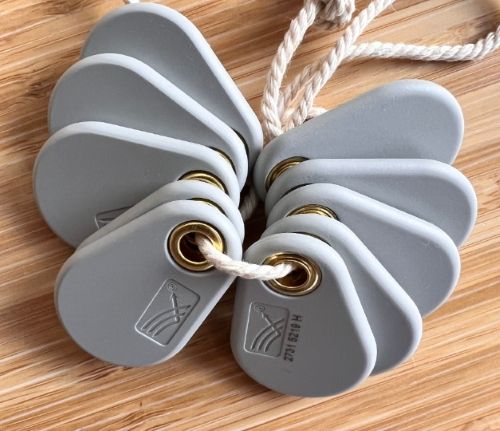
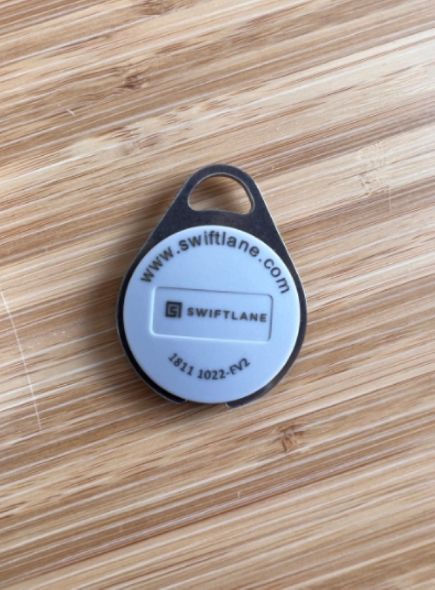
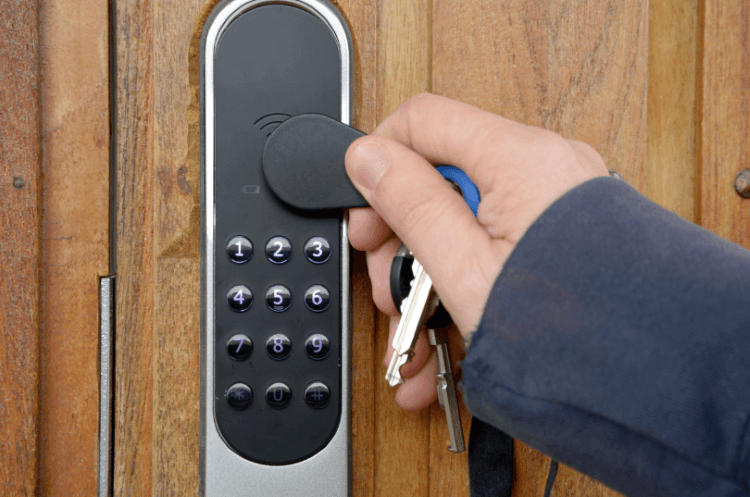

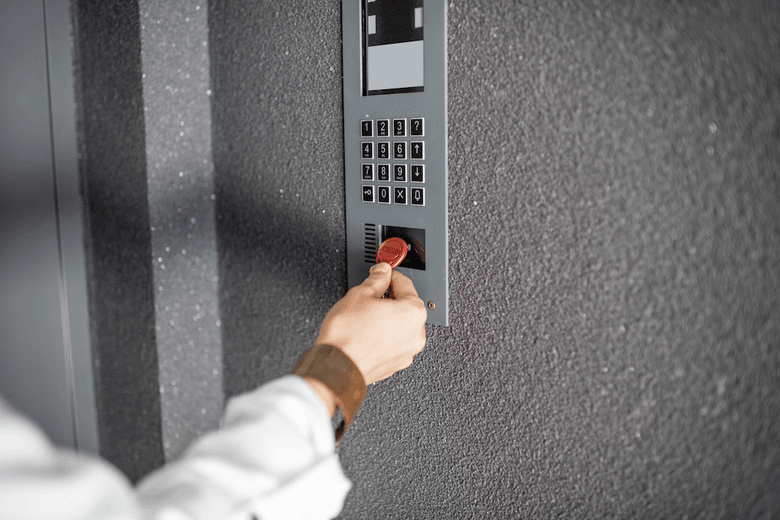
![Guide to Apartment Key Fob Systems [2025]](/static/38e0e833c81a96186ffdb81ec5a99252/faae0/keyfob-2.png)
